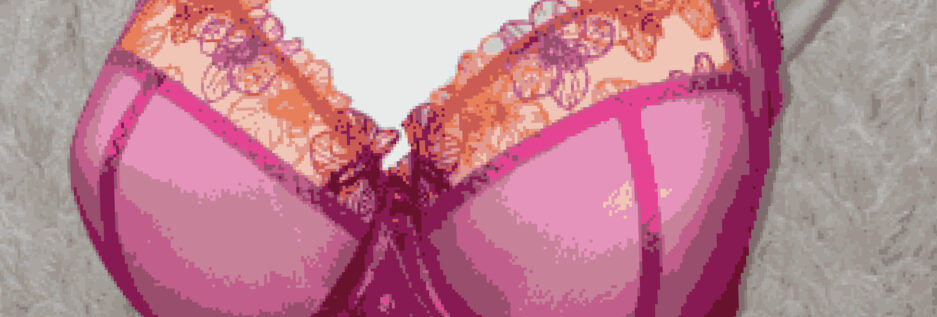I don’t know about anyone else out there, but having to wear a bra every day, I really am motivated to get the fit right. So, I decided I needed one more try. And that one more try was just the trick.
Using the half-size right in between the size I’d been working with for so long, and the next size up that was too big was brilliant! I woke up at 4:30 that morning and came downstairs to work on my bra pattern. And I have to say, after 2 years of trying, I was not really as enthused as I was say a year and half ago. I’ve had too many bras that weren’t what I wanted. I’m still wearing them, but perfection felt beyond my reach.
All that changed this week. I’ve found my size! Oh what relief. I encourage you, if you are still struggling, don’t give up.
So, let me take you back to my process.
I had what I thought was going to be my size. But I felt rather defeated thinking of the alterations I would have to make to a new cup because I knew the wire and cup size still didn’t match. The good news was this cup size is only two sizes larger than the wire size I need, and one size smaller than what I’d been using.
That got me thinking again; I knew from reading the Bra Makers Manuals that we can go up or down one wire size without changing the cradle. Okay, I was going to go up one cradle size. I traced out a 40 cradle instead of a 38. This now meant the cup I needed, which corresponds to a 42 wire was only one size away. Oh, the relief of that realization! I cut everything out and sewed it up as is – no alterations.

Here’s the Pin Up Girls Classic pattern, as is, except I split the lower cup. There are a couple of pins in there trying to (unsuccessfully) smooth things out and get rid of the wrinkles on Catherine. This is my best fit yet. There are only a couple of minor fitting issues at this point. If you’re dealing with an Omega shape, I strongly recommend doing this – go up one cradle size. It will really help as there will be fewer alterations to do, or the ones you still do need to do will be less drastic.

This will be one alteration I make to the cup. It gaps a little at the underarm. A tuck in the pattern there will eliminate that for future bras.
And the second alteration I will make to the pattern is the bridge. I made this one bra without any alterations to the bridge – so I didn’t use my custom bridge and it’s just too wide (I knew that) and too high. But just how much too high was it? That led to my second brain wave this week. I took my custom bridge at the full bridge height and drew 1/2″ line down from the top. Then another 1/4″ down and a second 1/4″ down.
Here’s my custom bridge with the first 1/2″ cut off. And that’s the exact amount I need to shorten it.

Here’s a closer up picture showing the markings I made on the top of the bridge:

I’d already snipped off the first 1/2″, so now I know how much I need to lower my bridge.
There were a couple of other things I’d said in the past I’d share, so I took pictures as I was sewing my bra. Oh, and a side note here, I signed up for Beverly Johnson’s Bra class on Craftsy and I had her explaining the steps as I was sewing. That was such fun. It was almost like having her right here with me.

You can see here the bottom band elastic coming up under where the channeling will be sewn on. This just fits, but if it didn’t, here’s how you fix that.

Fold the channeling over the elastic so you can see how much you’ll need to trim away. See that pink dotted line? If I needed to trim, that would be my cutting line.

And here with the channeling out of the way again. Follow the curve of the channeling when drawing your dotted line (better than I did here) and you’ll have your exact cutting line.
I’m off to make those changes to my pattern and cut out another bra.
Happy creating!






